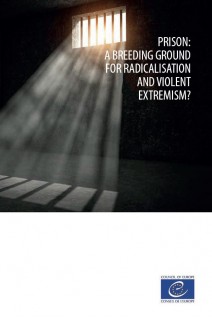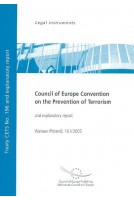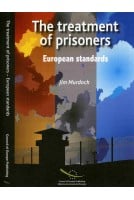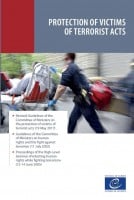

Human rights and the fight against terrorism - The Council of Europe... (2005)
- Exclusivité web !


What measures can prison authorities take to detect radicalisation in prison? How should prison staff be selected? How should they be trained to evaluate and manage the risks without abandoning high ethical standards? What role can religious representatives, psychologists, friends and family play?
The appalling images of recent terrorist attacks in Europe and the rest of the world remain in everyone's memory. In the face of such horrendous acts, national governments and international organisations are seeking to identify the root causes of this situation in order to prevent and combat radicalisation, extremism and terrorism.
The profiles and motives of radicalised persons vary considerably, but the first steps towards radicalisation are generally a result of sympathies for radical discourse and of meeting an individual, in person or online, who is already radicalised.
Prisons are one of the places for such contacts. Radicalised prisoners take advantage of the concentrated population in prisons in order to proselytise and develop extremist and terrorist networks.
This publication can help national authorities and professionals answer these questions. It proposes guiding principles, tools and advice based on an approach that emphasises a balance between human rights, security and effective criminal justice.
Preface
Part 1 – Guidelines for prison and probation services regarding radicalisation and violent extremism
I. Terminology used for the purpose of these guidelines
II. Scope
III. Basic principles and general considerations
IV. Prison and probation work
V. Detection, prevention and dealing with radicalisation and violent extremism in prison
VI. Post-release work
VII. Research, evaluation and communication
Part 2 – Council of Europe Handbook for prison and probation services regarding radicalisation and violent extremism
Background
I. Scope and main issues
II. Violent extremist offenders and the radicalisation process
III. Risk assessment of violent extremist offenders and radicalisation
IV. Managing rehabilitation of violent extremists in prison and on probation
V. Managing safety and security of violent extremists in prison and on probation
VI. Connecting with friends, families and communities
VII. Capacity building in prison and probation services
Part 3 – Good practices and issues faced: expert meeting of prison and probation services on radicalisation to violent extremism
I. Introduction
II. Workshop summaries
III. Conclusion
Part 4 – The fight against violent extremism and radicalisation leading to terrorism
I. Action Plan
II. Declaration of the Committee of Ministers of the Council of Europe
III. Implementing the Action Plan
















What measures can prison authorities take to detect radicalisation in prison? How should prison staff be selected? How should they be trained to evaluate and manage the risks without abandoning high ethical standards? What role can religious representatives, psychologists, friends and family play?
The appalling images of recent terrorist attacks in Europe and the rest of the world remain in everyone's memory. In the face of such horrendous acts, national governments and international organisations are seeking to identify the root causes of this situation in order to prevent and combat radicalisation, extremism and terrorism.
The profiles and motives of radicalised persons vary considerably, but the first steps towards radicalisation are generally a result of sympathies for radical discourse and of meeting an individual, in person or online, who is already radicalised.
Prisons are one of the places for such contacts. Radicalised prisoners take advantage of the concentrated population in prisons in order to proselytise and develop extremist and terrorist networks.
This publication can help national authorities and professionals answer these questions. It proposes guiding principles, tools and advice based on an approach that emphasises a balance between human rights, security and effective criminal justice.
Attention, en vertu de nos conditions générales de vente, l'achat des PDF/epub est réservé aux particuliers.
